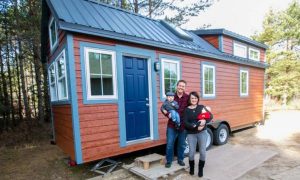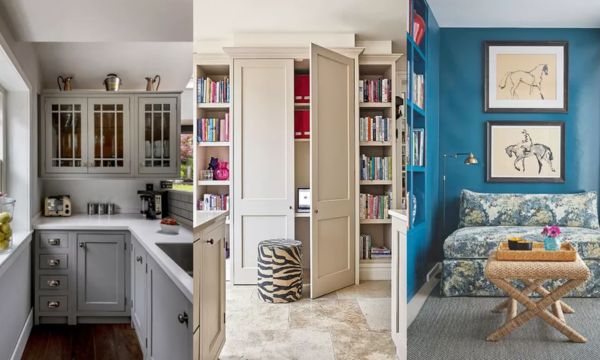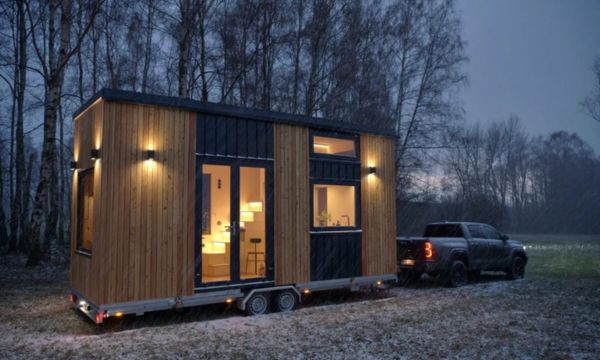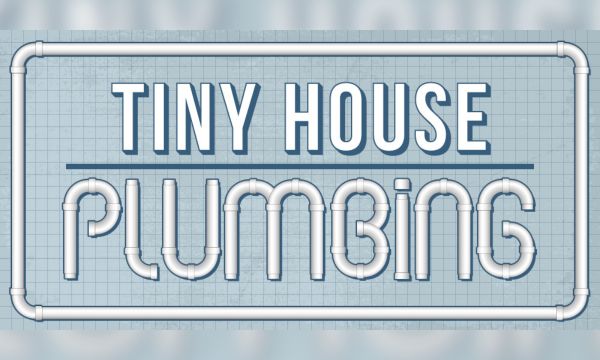Tiny House Family Living
The idea of living in a compact home has become increasingly popular with many families in recent years. Tiny houses are compact homes with an emphasis on sustainability, usually 100 to 400 square feet in total. Many families find that the benefits of living in a small house far outweigh the problems, although the idea of living in such a small area can be intimidating to others.
Why Families Prefer to Live in Tiny Houses:
Tiny houses are becoming increasingly popular with families for several reasons. The independence it offers from personal finance is one of its main attractions. Tiny houses are much cheaper than regular homes, and as such they enable families to reduce or completely eliminate their reliance on mortgages and utility bills. This financial independence paves the way for more options for travel, education, and experiences that might be unattainable if the home were bigger and more expensive.
Living in a Tiny Space can be Good for Families:
Living in small spaces forces individuals and families to bond and helps them develop healthy relationships. Because there isn’t enough room for everyone, family members are forced to spend more time together, fostering a sense of belonging and shared experiences. Living in a smaller space, such as a tiny house, requires less consumption and waste, which in turn encourages a simpler and more environmentally responsible lifestyle.
Planning a Tiny House for the Family:
When planning the layout of a small house for a family, it is essential to think carefully about the size of the available space and the function of the house. To meet the needs of all family members, every square inch of space must be used efficiently.
See Too:
Taking Space and Function into Account:
When designing a small house for a family, it is important to consider the individual needs and daily habits of each family member to make the house functional. Specific areas should be designated for sleeping, working, playing and storing things to give everyone their own space and protect their privacy.
Innovative Storage and Organization Solutions:
In small homes, maximizing storage space is critical. Help keep your living space clutter-free with smart storage solutions such as folding furniture, hidden cupboards and wall shelves.
Ideas for Multifunctional Furniture:
In small spaces it is crucial to have furniture that is versatile. Examples of smart furniture options for families living in small homes include a sofa that folds out into a bed and a dining table that folds to create extra space.
Find the Ideal Location to Set Up Shop:
Tiny houses are usually associated with rural living, but families can also find ideal accommodations in metropolitan environments.
Comparison of City Life and Country Life:
Living in a small house in the city, residents have easy access to a variety of services, employment and cultural experiences. On the other hand, rural living offers more peace, space to garden and a deeper connection with your surroundings.
Zoning and Legal Considerations:
Families should research local zoning and building codes before deciding where to put their tiny house. This is to check whether their home meets the requirements.
Alternatives to Community Living:
Some families decide to move into small family communities, which bring together people with similar interests to live close together, develop a sense of community and support each other.

Tiny House Family Living
Conclusion:
Living in a tiny house with your family can be a fun and comforting experience. It encourages simplicity, sustainability and intimacy between family members. By adopting minimalism, creative design and eco-friendly practices, the family can create a home that is comfortable and harmonious despite their small footprint. The tiny home movement continues, prompting others to consider this different lifestyle as an option. The tiny house movement will continue to grow as more families share their experiences and success stories.
FAQs:
1. Is a small house suitable for families with children?
Yes, many families with children find life in a tiny house fun and fulfilling. It encourages quality time together and teaches valuable life lessons about simplicity and minimalism.
2. Can I build a tiny house myself or do I have to hire a professional?
Building a tiny house can be a do-it-yourself project, but it requires careful planning and some building skills. Hiring a professional builder can ensure a well-designed, structurally sound tiny home.
3. What are the benefits of living in a tiny house for the environment?
Thanks to lower energy consumption and the use of environmentally friendly materials, the tiny house has a smaller ecological footprint. They promote sustainable living and minimize environmental impact.
4. How can tiny homes overcome storage challenges?
Tiny house families make the most of limited space with innovative storage solutions such as hidden compartments, wall shelves and multifunctional furniture.
5. Is living in a tiny house a permanent option or can the family move to a larger home later?
Living in a tiny house doesn’t have to be a permanent option. Families have the option of moving to larger homes if circumstances change, but many find long-term satisfaction in small-scale living.
 Organization Hacks for Small Living Spaces
Organization Hacks for Small Living Spaces
Ad Living in a small area can be difficult, but it can also be fun if you […]
More Tiny House Mobility and Flexibility
Tiny House Mobility and Flexibility
Ad In recent years, the tiny house movement has exploded in popularity worldwide. The appeal of downsizing […]
More DIY Plumbing in Tiny Houses
DIY Plumbing in Tiny Houses
Ad We welcome you to the world of tiny houses, where ingenuity and imagination go hand in […]
More